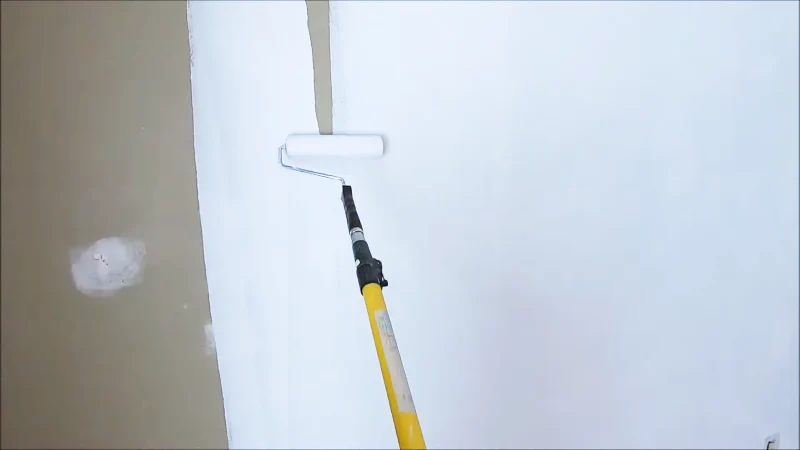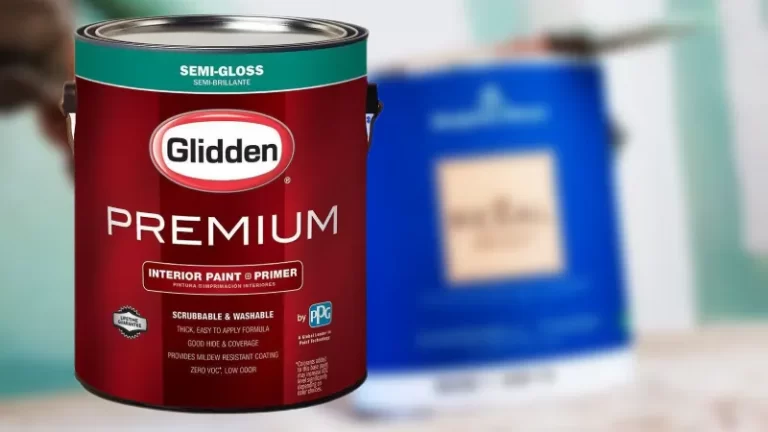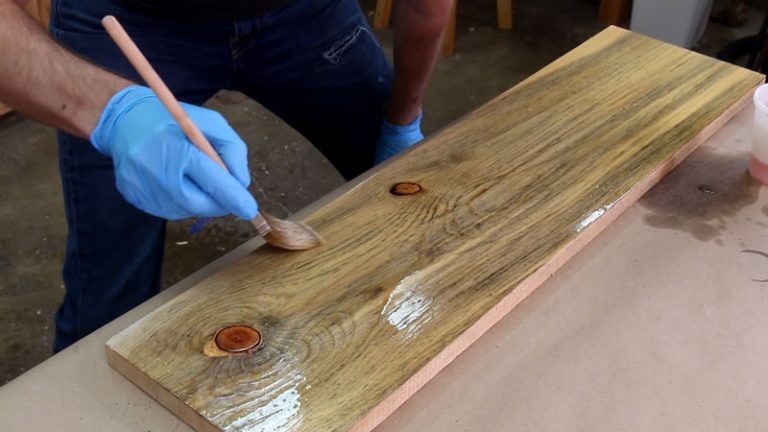Why is my Primer Showing Through the Paint?

Primer is an essential component of the painting process, as it provides a smooth and even surface for the paint to adhere to. When applied correctly, it can help to improve the durability and appearance of the final coat of paint.
However, if the primer is not applied correctly or if it is not compatible with the paint, it can sometimes show through the final coat of paint, resulting in an uneven and unappealing finish.
This problem can be frustrating and time-consuming to fix, so it is important to understand the causes and solutions for primer showing through the paint to ensure a professional and long-lasting finish.
You'll Learn About
Causes Of Primer Showing Through Paint
The main causes of primer showing through paint are applying paint over wet or dry primer, using the wrong primer, and using thin paint, or low-quality primer. To try and solve these problems, the painter may try to prime as many layers as possible for a longer period, and wait for the primer to completely dry before another coat of paint.
Applying Paint Over Wet Or Insufficiently Dry Primer
If the primer is not fully dry when the paint is applied, it can cause the paint to lift or peel off, revealing the primer underneath. This can be caused by applying the paint too soon after the primer, or by using a primer that takes longer to dry than the manufacturer’s recommended time.
Using A Primer That Is Not Compatible With The Paint
Different types of paint and primer have different formulations and may not be compatible with each other. Using a primer that is not compatible with the paint can cause the paint to peel or flake off, revealing the primer underneath.
Using Too Thin Or Transparent A Paint
Some paints are more transparent than others, and may not provide enough coverage to fully hide the primer. This can be especially noticeable if the primer and paint are different colors.
Using A Paint With A Lower Quality Or Coverage Than The Primer
Using a lower quality paint, or a paint with lower coverage than the primer can result in the primer showing through the paint. This is because the paint may not adhere well to the primer or may not provide enough coverage to fully hide it.
| Cause | Description |
|---|---|
| Inadequate Surface Preparation | Failure to properly clean and sand the surface before primer application can lead to contaminants and residue causing the primer to show through the paint. |
| Insufficient Primer | Using too little primer or not allowing it to dry completely before applying paint can result in the primer showing through. |
| Incorrect Primer Type | Using a primer that is not compatible with the surface or paint type can result in the primer showing through. |
| Water Damage | Water penetrating the surface and activating dyes and tannins can cause the primer to bleed through the paint. |
| Poor Quality Paint | Using low-quality paint that does not adhere well to the primer can result in the primer showing through. |
| Incorrect Application Technique | Applying the primer or paint incorrectly, such as not using the correct brush or roller, can result in the primer showing through. |
How Water Causes Primer Bleeding Through Paint?
Water causes primer bleeding through paint by penetrating the surface of the project and activating dyes and tannins present in the wood or other material. When the surface is wet, the dyes and tannins become more soluble and can bleed through the primer and paint layers, resulting in discoloration or staining.
Additionally, if the surface is not properly sealed or the primer is not applied correctly, water can seep into the wood or other material and cause bleeding. This can also occur if the surface is not properly cleaned or sanded before applying the primer, as any contaminants or residue can also cause bleeding.
Overall, the main cause of water-related primer bleeding is the activation of dyes and tannins by water, and the failure to properly seal and prepare the surface before primer application.
How To Fix Primer Showing Through Paint
For fixing the issue you can sand down the primer and reapply, apply a coat of paint or use different kinds of primer or paint.
Sand down the primer and reapply
If the primer is showing through the paint in small areas or in thin layers, you may be able to fix the problem by sanding down the primer and reapplying it. This can help to smooth out any imperfections in the surface and create a more even base for the paint.
Be sure to use fine-grit sandpaper and wipe the surface clean before applying a new coat of primer.
Apply a coat of paint over the primer
Apply a coat of paint over the primer, making sure to apply it thickly and evenly. If the primer is showing through the paint in large areas, you may be able to fix the problem by applying another coat of paint. Be sure to apply the paint thickly and evenly, using a high-quality paintbrush or roller.
This can help to provide better coverage and help the paint to adhere more effectively to the primer.
Use a different type of primer or paint
Use a different type of primer or paint that is better able to cover the existing primer. If the primer is especially difficult to cover, you may need to consider using a different type of primer or paint that is better able to cover the existing primer.
Some primers and paints are designed to have better coverage and adhesion than others and may be more effective at hiding the primer. Be sure to choose a primer and paint that are compatible with each other and follow the manufacturer’s recommendations for how many coats to use.
Things to Know Before Using Primers Like This
There are a few things to know or things that you will need when it comes to preventing primer from showing through paint:
Know The Type Of Paint And Primer You Are Using
It is important to know the type of paint and primer you are using, as different types have different formulations and may not be compatible with each other. Be sure to choose a primer and paint that are specifically designed for use with each other and follow the manufacturer’s recommendations for how to apply them.
Know The Surface You Are Painting
It is also important to know the surface you are painting, as different surfaces may require different types of primer and paint. For example, porous surfaces such as drywall or wood may require a more adhesive primer, while non-porous surfaces such as metal or glass may require a different type of primer.
Have The Necessary Tools And Supplies
To prevent the primer from showing through the paint, you will need a few basic tools and supplies, such as a paintbrush or roller, sandpaper, a paint conditioner (optional), and high-quality, high-coverage paint. Be sure to have these items on hand before you begin the painting process.
Follow The Manufacturer’s Recommendations
It is important to follow the manufacturer’s recommendations for how to apply the primer and paint. This includes the recommended number of coats, drying times, and any special instructions or precautions.
By following these recommendations, you can help to ensure that the primer and paint are applied correctly and provide a professional and long-lasting finish.
Tips For Preventing Primer From Showing Through Paint
Follow the tips for preventing the issue.
Use A Primer That Is Compatible With The Paint
Choosing a primer that is compatible with the paint is essential for preventing the primer from showing through. Different types of paint and primer have different formulations and may not be compatible with each other.
Be sure to choose a primer that is specifically designed for use with the type of paint you are using, and follow the manufacturer’s recommendations for how to apply it.
Allow The Primer To Dry Completely Before Applying the Paint
It is important to allow the primer to dry completely before applying the paint. If the primer is still wet or not fully dry when the paint is applied, it can cause the paint to lift or peel off, revealing the primer underneath. Be sure to follow the manufacturer’s recommendations for how long the primer should dry before applying the paint.
Use A High-Quality, High-Coverage Paint
Using high-quality, high-coverage paint can help to prevent the primer from showing through. These types of paint are more likely to adhere well to the primer and provide better coverage, resulting in a smoother and more even finish.
Follow The Manufacturer’s Recommendations
It is important to follow the manufacturer’s recommendations for how many coats of primer and paint to use. Using too few coats can result in the primer showing through while using too many coats can lead to drips and sags in the paint. Be sure to read the instructions carefully and apply the primer and paint according to the recommended number of coats.
Editor’s Note
It’s possible that the primer is still showing through because the paint is not fully covering it. This can happen if the paint is not applied thickly enough or if the primer is especially difficult to cover.
To fix this, you can try applying another coat of paint, making sure to apply it thickly and evenly over the primed areas.
If the primer is still showing through after two coats of paint, you may need to apply a third coat. If the problem persists after three coats of paint, you may need to consider using a different type of primer or paint that is better able to cover the existing primer.
Conclusion
Primer showing through paint can be a frustrating problem that can ruin the appearance of a freshly painted surface. Understanding the causes and solutions for this problem is essential for achieving a professional and long-lasting finish.
Some common causes of primer showing through paint include applying paint over wet or insufficiently dry primer, using a primer that is not compatible with the paint, using too thin or transparent paint, and using paint with lower quality or coverage than the primer.
To fix this problem, you can try sanding down the primer and reapplying it, applying another coat of paint over the primer, or using a different type of primer or paint that is better able to cover the existing primer.
To prevent the primer from showing through the paint, it is important to use a primer that is compatible with the paint, allow the primer to dry completely before applying paint, use high-quality, high-coverage paint, and follow the manufacturer’s recommendations for how many coats of primer and paint to use.
Proper application of primer and paint is essential for achieving a professional and long-lasting finish.

![What Causes Joint Compound to Mold [And Prevention]](/wp-content/uploads/2023/01/black-mold-in-joint-compoun-768x432.jpg)


